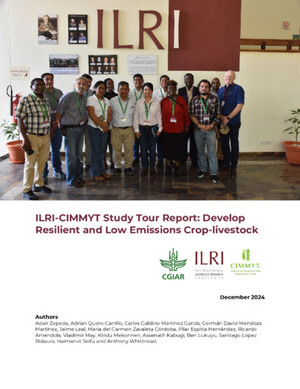
Poverty dynamics and the determining factors among East African smallholder farmers
Abstract
Rapid economic development in East Africa is matched by extremely dynamic smallholder livelihoods.To quantify the changes in poverty of smallholder farmers, to evaluate the potential of farm and off-farm activities to alleviate poverty, and to evaluate the potential barriers to poverty alleviation.The analyses were based on a panel survey of 600 households undertaken in 2012 and re-visited approximately four years later in four sites in East Africa. The sites represented contrasting smallholder farming systems, linked to urban centres undergoing rapid economic and social change (Nairobi, Kampala, Kisumu, and Dar-es-Salaam). The surveys assessed farm management, farm productivity, livelihoods, and various measures of household welfare.Almost two thirds of households rose above or fell below meaningful poverty thresholds - more than previously measured in this context - but overall poverty rates remained constant. Enhanced farm value production and off-farm income proved to be important mechanisms to rise out of poverty for households that were already resource-endowed. However, households in the poorest stratum in both panels appeared to be stuck in a poverty trap. They owned significantly fewer productive assets in the first panel compared to other groups (land and livestock), and these baseline assets were found to be positively correlated with farm income in the second panel survey. Equally these households were also found to be among the least educated, while education was found to be an important enabling factor for the generation of high value off-farm income.Rural development that aims to stimulate increases in farm produce value as a means to alleviate poverty are only viable for already resource-endowed households, as they have the capacity to enhance farm value production. Conversely, the alleviation of extreme poverty should focus on different means, perhaps cash transfers, or the development of more sophisticated social safety nets. Furthermore, while off-farm income presents another important mechanism for poverty alleviation in rural areas, these opportunities are restricted to those households that have had access to education. As more households turn to off-farm activities to supplement or replace their livelihoods, farming approaches will also change affecting the management of natural resources. These dynamics ought to be better understood to better manage land-use transitions.
Citation
Hammond, J., Pagella, T., Caulfield, M.E., Fraval, S., Teufel, N., Wichern, J., Kihoro, E., Herrero, M., Rosenstock, T.S. and Wijk, M.T. van 2023. Poverty dynamics and the determining factors among East African smallholder farmers. Agricultural Systems 206:103611.










